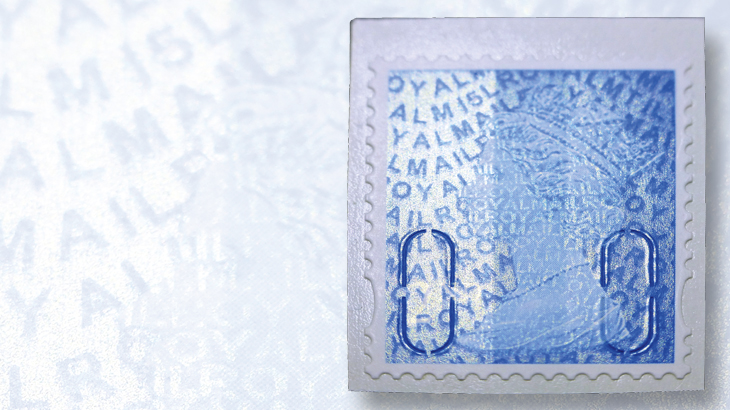World Stamps
Machin stamps produced in different formats over a half century
Great Britain Philately — By Larry Rosenblum
This concludes a series of three columns on the Machin definitives, which were introduced 50 years ago, on June 5, 1967. The first column was published in the May 8 issue, page 17; and the second in the May 29 issue, page 20.
Security against forgery and reuse has been a concern of the British Post Office since the first postage stamps were issued in 1840. Several features have been introduced to Machins to increase security.
Two large elliptical perforations were added to Machins starting in 1993, in an effort to make the stamps harder to counterfeit. The Scott Standard Postage Stamp Catalogue calls these syncopated perforations.
Straight edges in booklet panes, which had been introduced in 1987, were discontinued in 1993 for the same reason.
Connect with Linn’s Stamp News:
Sign up for our newsletter
Like us on Facebook
Follow us on Twitter
In 1995, a £1 violet Machin stamp was issued in the standard low-denomination size (Scott MH237). It was coated with a shiny, transparent, iridescent ink called iriodin to make the stamp hard to counterfeit. The coating was discontinued in 2007 when a new cerise £1 Machin (MH373) replaced the violet one.
Iridescent overprints were introduced to all self-adhesive Machins in 2009 and to conventionally gummed Machins in 2013. These consist of wavy lines of the text “ROYAL MAIL.” The lines over the queen’s portrait have a different pattern than those over the background and denomination tablet.
A one-character alphabetic source code replaces one letter of the iridescent overprint to indicate the issue format. For example, “F” indicates a booklet of four, and “S” indicates a booklet of six. Regular panes of stamps do not have a source code.
Starting in 2010, a two-digit year code representing the year the stamp was printed replaces two letters of the overprint. The location of these codes on the stamp is changed periodically.
The text of the overprint is sometimes changed temporarily to mark a special event. The Scott catalog describes the overprints but only briefly mentions the presence of source and date codes. These overprints are still in use.
Finally, two extended oval-shaped slits were added to self-adhesive stamps starting in 2009. These were intended to make it difficult to peel off an uncanceled stamp from an envelope. The Scott catalog describes these as oval slits.
In spite of Royal Mail’s efforts, counterfeit Machins are very common today and often look very much like the genuine stamps. Collectors should be wary of purchasing mint Machins for unusually low prices, especially in large quantities. Kiloware containing used Machins might also contain counterfeits.
Interested in more?
In the June 12 issue of Linn’s Stamp News, Larry Rosenblum offers a full story on the 50th anniversary of the fascinating Machin stamps, featuring an in-depth look at the varieties that the classic design has yielded during its remarkable run.
MORE RELATED ARTICLES
Headlines
-
US Stamps
Oct 7, 2024, 12 PMVasiliauskas named president of Mystic Stamp Co.
-
US Stamps
Oct 6, 2024, 5 PMApgar souvenir card available
-
US Stamps
Oct 6, 2024, 4 PMFirst Continental Congress and U.N. stamps receive Scott catalog numbers
-
World Stamps
Oct 5, 2024, 1 PMCanada Post continues Truth and Reconciliation series










